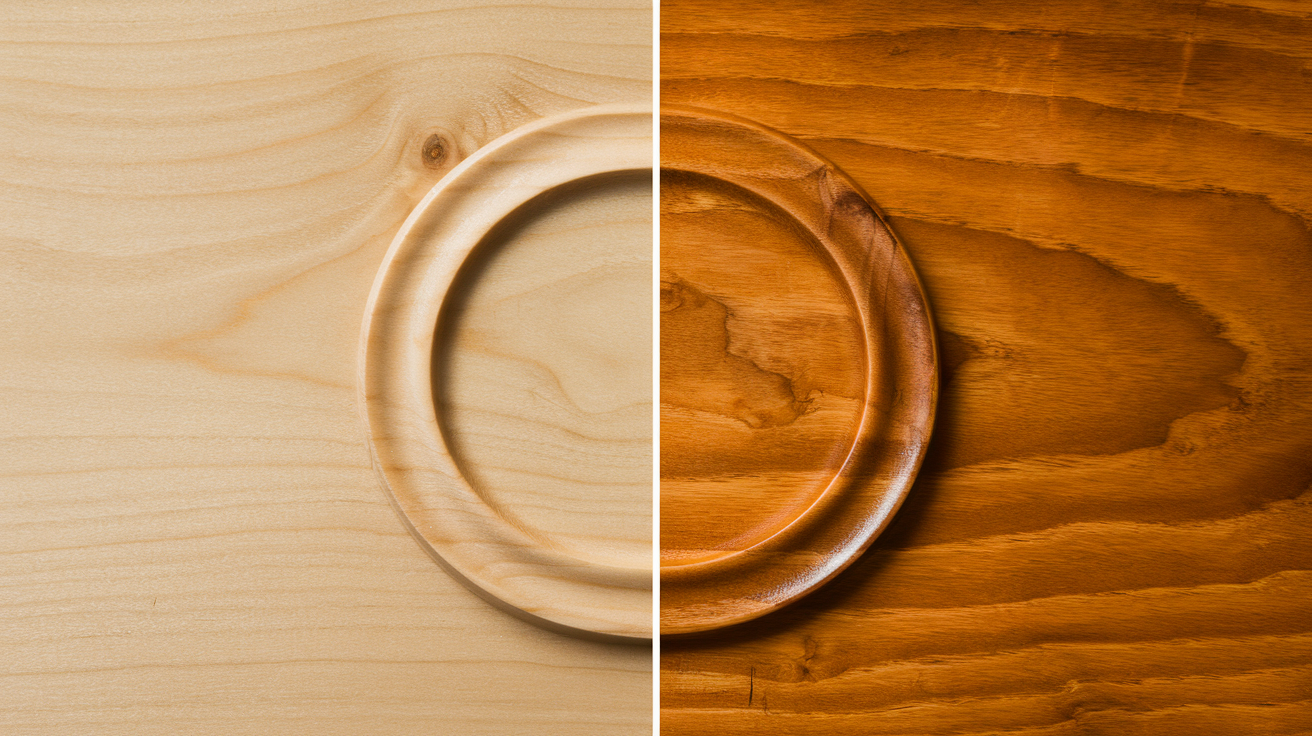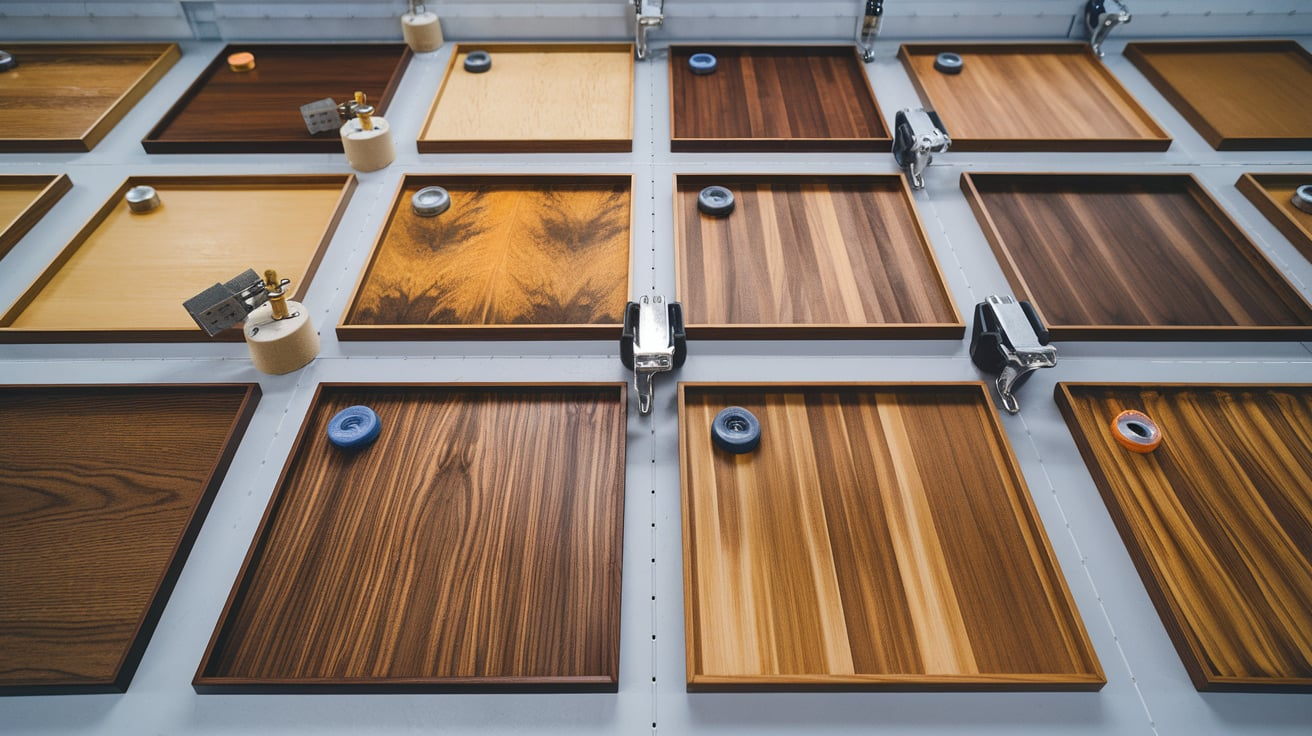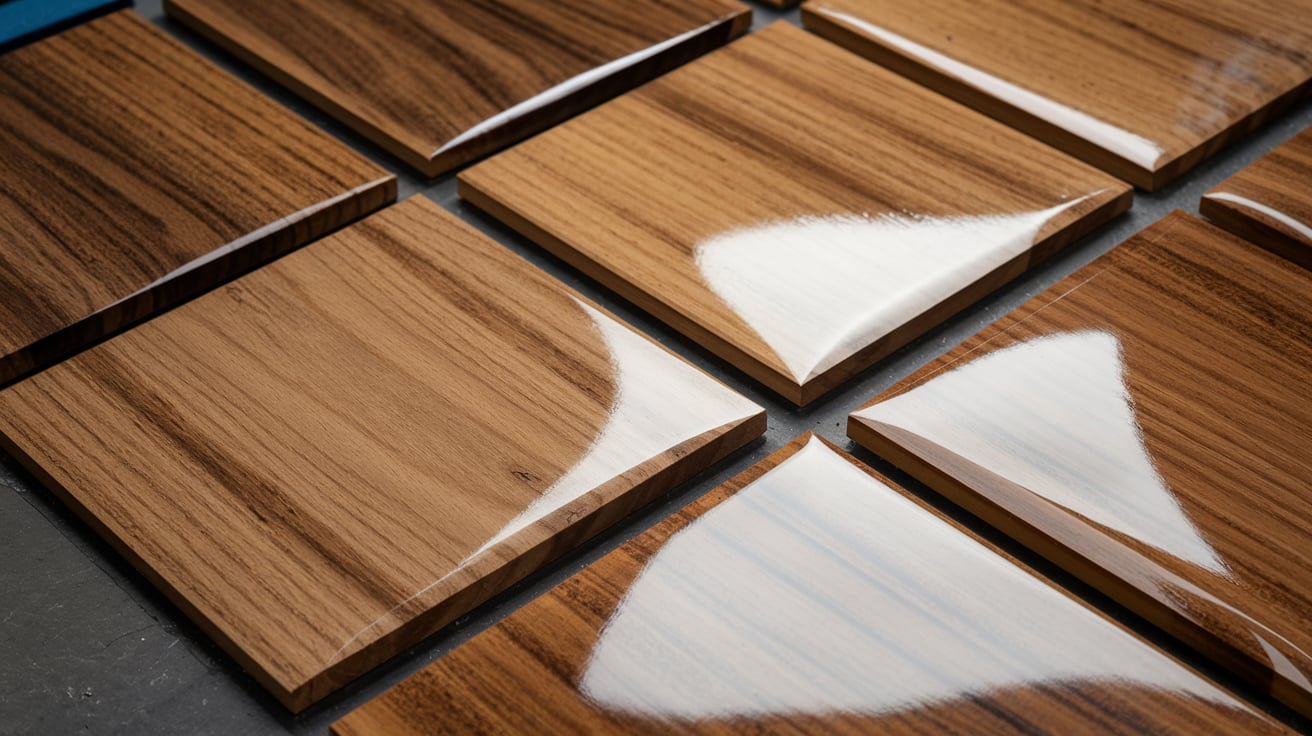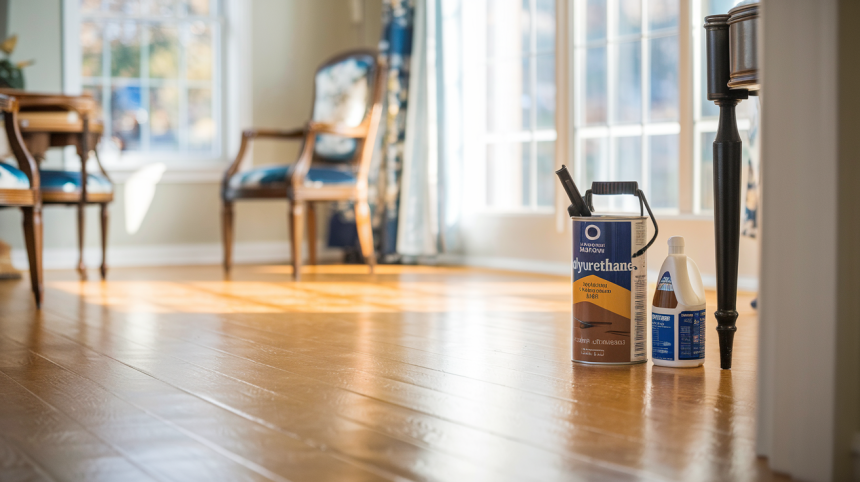Have you ever finished applying polyurethane to your hardwood floors only to find it scratching or wearing too quickly?
Or perhaps you’re standing in the store aisle, overwhelmed by dozens of options, wondering which finish will truly protect your investment?
Many homeowners struggle when selecting floor finishes. Some end up with products that scratch easily, while others pay premium prices for commercial finishes without knowing if they’re worth the cost.
This guide will help you understand which polyurethane finish offers the best protection for your hardwood floors.
You’ll learn the differences between oil-based and water-based options and see how commercial finishes compare to standard ones.
Water-Based vs. Oil-Based: Which Performs Better?

The question of “which type of polyurethane is best?” doesn’t have a simple answer.
Floor finishes vary widely depending on formulation, application thickness, and intended use.
While some homeowners prefer the warm amber tones of oil-based finishes, others might prioritize durability or lower odor during application.
Let’s examine the performance results from controlled testing of 12 popular floor finishes to give you a clearer picture of what might work for your specific situation.
Key Factors to Consider When Choosing Floor Finish
Beyond pure performance, several other factors should guide your polyurethane selection:
1. Appearance Preferences
Oil-based finishes generally provide a warm, amber tone that many homeowners prefer for traditional looks. They enhance grain patterns and add richness to darker woods.
Water-based finishes dry clear and allow the natural wood color to show through. Bona’s newer “Mega One” formulation is specifically designed to prevent yellowing over time.
2. VOC Content and Application Considerations
The oil-based products tested had VOC levels between 350 and 510, with water-based options ranging from 95 to 275. Lower VOC means less odor and fewer airborne chemicals during application and curing.
Water-based products generally dry faster (2-3 hours vs. 6-12 hours for oil-based), allowing for multiple coats in a single day.
3. Cost Factors
The cost varies significantly across products:
- Most economical oil-based: Dura Seal Master Line (7 cents per sq ft per coat)
- Most economical water-based: Dura Seal Master Line Water-Based (10 cents per sq ft)
- Premium options: Bona Traffic HD (44 cents per sq ft), followed by VeraThane Diamond (18 cents per sq ft)
Remember that these prices reflect material costs only. Professional installation would add labor costs regardless of product choice.
The Polyurethane Durability Test

To find the most durable hardwood floor finish, a professional floor refinisher conducted a comprehensive test using 12 popular polyurethane products.
Using reclaimed maple flooring divided into equal sections, each finish received proper application according to manufacturer specifications.
Half of each sample was stained with Bona Jacobean to evaluate performance on both natural and stained surfaces.
The test included four oil-based options (Bona Wood Line Poly, VeraThane Professional 1100, Dura Seal Master Line, and Minwax Super Fast Drying) and eight water-based products (including specialty formulations like Bona Traffic HD Commercial and Minwax Water-Based Oil-Modified).
A custom-built “Auto Scratcher” device ensured consistent testing across all samples. Each finish faced multiple challenges:
- Nail scratches of varying sharpness at different weights
- Sandpaper abrasion tests with multiple grits
- Furniture drag simulation with weights up to 50 pounds
The Results: From Best to Worst

1. Bona Traffic HD Commercial
This commercial-grade water-based finish was the clear winner, showing minimal damage even under the heaviest furniture drag test.
Applied at 375 sq ft per gallon (the thickest of all tested), it’s also the most expensive, at 44 cents per square foot per coat, but it delivers superior protection.
2. Bona Mega One, Norton Poly Way 2500 & 3500
These three water-based finishes showed excellent durability, minimal white scratching, and strong abrasion resistance.
The Norton Poly Way 2500 offers exceptional value at 11 cents per square foot.
3. Minwax Water-Based Oil-Modified & Bona Omega
Both offered dependable protection without penetrating the stain layer in standard tests, though they exhibited slightly more wear than the top performers.
4. The Oil-Based Trio
Bona Wood Line Poly, VeraThane Professional, and Dura Seal Master Line performed similarly, with noticeable wear during aggressive testing and minor chipping during furniture drag tests.
5. VeraThane Diamond Wood Finish
Despite its thick application and attractive appearance, this water-based finish wore quickly during abrasion tests and showed the most visible white scratches.
6. Minwax Oil Polyurethane & Dura Seal Master Line Water-Based
These finishes demonstrated the poorest performance, with the finish breaking through quickly and causing significant damage during furniture drag tests.
Practical Recommendations Based on Your Needs

For high-traffic commercial spaces: Bona Traffic HD Commercial justifies its premium price with superior durability. It’s ideal for restaurants, retail spaces, or very busy households.
For active family homes: The Norton Poly Way 2500 provides excellent durability at a reasonable price point, making it perfect for busy family spaces.
For budget-conscious homeowners: Dura Seal Master Line oil-based polyurethane offers good performance at the lowest price point of all tested products.
For keeping natural wood tones: Bona Mega One prevents yellowing while providing excellent durability.
For traditional wood warmth: Any of the oil-based options will provide that classic amber tone, with Bona Wood Line Poly offering the best performance among them.
Wrapping Up: Finding Your Perfect Floor Finish
Choosing the right polyurethane isn’t about following rigid rules—it’s about finding what works for your specific needs and home.
The testing reveals that water-based finishes generally outperformed oil-based options in durability tests, with commercial-grade products showing significant advantages over standard formulations.
However, oil-based products still provide that traditional warm look many homeowners prefer.
Consider how your floors will be used—will they face heavy furniture, active children, or pets with claws? These factors should guide your decisions about product type and how many coats to apply.
The right choice will help ensure your floors remain a point of pride for years to come.
Frequently Asked Questions
Is Satin or Semi-Gloss Polyurethane Better for Hardwood Floors?
Satin and semi-gloss have identical durability but differ in appearance. Satin, the popular choice, hides scratches and is ideal for high-traffic areas. Semi-gloss offers more shine but displays imperfections easily.
What Polyurethane Lasts the Longest?
Bona Traffic HD Commercial excelled in scratch and abrasion tests, proving its durability. For home use, Bona Mega One and Norton Poly Way (2500 and 3500) also demonstrated excellent durability, outperforming traditional oil-based options.
What Brand of Polyurethane Is Best?
Bona and Norton delivered the most durable finishes in tests, with Bona’s Traffic HD leading, followed by Mega One and Omega. Instead of only considering brands, focus on specific product formulations that fit your needs and budget, as performance varies widely within each manufacturer.
Is Water-Based or Oil-Based Polyurethane Better for Floors?
Water-based polyurethanes show better durability and advantages like quicker drying, lower odor, and less yellowing. Oil-based options add a classic amber tone, are usually cheaper, and work well in less demanding areas.

